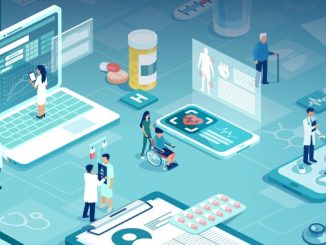
READ AGAIN: With many coronavirus health tech solutions being delivered within weeks Indi Singh, IT transformation expert at PA Consulting, looks into how the ‘bungee cord bounce back’ can be avoided
CREDIT: This is an edited version of an article that originally appeared on Digital Health
The COVID-19 healthcare response over the last six months has demonstrated the incredible ability of individuals and organisations to adopt digital solutions at an unprecedented pace. Many activities, such as the move to virtual consultations that had been planned for years, were delivered in a matter of weeks.
The question now is, what happens next and how can we avoid a bounce back up the bungee cord? Any recovery phase will bring extra challenges to healthcare delivery – including addressing the significant backlog of people waiting for elective care – optimising patient triage so they are treated in the right place at the right time, and managing the additional risks of COVID-19 infection prevention and control. At the same time, while dealing with this, we will need to address the need to have mixed models of care, from online to face-to-face, as well as proactively looking to address the inequalities that have surfaced.
Pragmatic data
There are five ways in which digital methods can integrate with, and help, health and care providers address these challenges. The first is to use pragmatic data insight tools, spun up in weeks, such as that used by Frimley ICS to predict, and respond to, demand at GP practices. This is one example of how modelling and data science expertise can create insight to inform scheduling and resourcing decisions.
It will also be important to take account of the capacity needed outside hospital settings – for example, the need to support mobile diagnostics facilities in primary and community care so that tests can be done early in the care process.
New workforce models
With this shift in where care is delivered, there will be a need to implement new workforce models. One example of this can be seen in the work of Southampton Primary Care Ltd which has used digital workforce planning tools to make better use of their existing staff to make the 28 GP practices in the city more sustainable.
Digital alternatives and enhancements
The second area to focus on is digital alternatives and enhancements to face-to-face clinical contact, and the provision of holistic solutions. This means improving and extending the patient experience of digital, and reaching those who are vulnerable.
Although online and video consultations have been very useful in the COVID-19 peak, healthcare providers should consider a wider range of complementary, multi-technology solutions – such as portable diagnostics and remote monitoring – as often remote consultations on their own are not sufficient.
For example, patients with cystic fibrosis could use home-based, digitally-enabled spirometry to monitor their own condition, in close collaboration with their clinical team through the device’s online portal. These patient monitoring devices, and early warning systems, can change the way follow-up care is arranged so that contact with specialists is based on need, rather than by pre-determined slots in a calendar.
Other options include smartphone urine tests that can detect a UTI without the need to wait for formal urinalysis results from a lab – meaning treatment can start more quickly, especially in the elderly, and potential patient deterioration and hospital admission can be avoided. Digital stethoscopes, portable ECG monitors and digital otoscopes are increasingly being used in primary care to spot rare conditions, such as idiopathic pulmonary fibrosis, more quickly, significantly reducing delays in initiating life-prolonging treatment and improving patient outcomes.
Workforce collaboration tools
Another way digital tools can help improve care is through the use of workforce collaboration tools, such as MS Teams. Whilst funding has been provided on licenses, similar investment is needed in the service change. Many healthcare organisations have yet to discover, and release, the significant time and efficiencies collaboration software can offer. This will require local investment in training and roll-out programmes, and an awareness that this technology can be used as a tool for clinical collaboration – such as supporting multidisciplinary teams’ virtual ward rounds, collaborative working and speeding up complex patient discharge.
Model and manage patient flows
Finally, in preparation for winter, digital tools can help model and manage patient flows more effectively. For instance, the emergence of advanced machine learning algorithms and digital twins (digital replicas of physical assets) can provide retrospective, real-time and prospective intelligence on patient flows and be used to model different scenarios. The use of these kinds of tools in Nottingham hospitals has enabled elective in-session utilisation to be increased by 2%, and there was a reduction in elective case cancellations of 4%.
All this underlines that the post-COVID-19 recovery in the NHS needs to aim to do more than simply restore the pre-pandemic status quo. With phase 3 plans being developed, now is the time to consider how integrated care services can move to a ‘thriving’ state of digital maturity by baking digital solutions into the local service change.
This doesn’t mean creating lists of IT equipment, but considering the challenges of providing patient-centred care in this complex, post-COVID-19 world – and how digital solutions can improve that care.


Be the first to comment